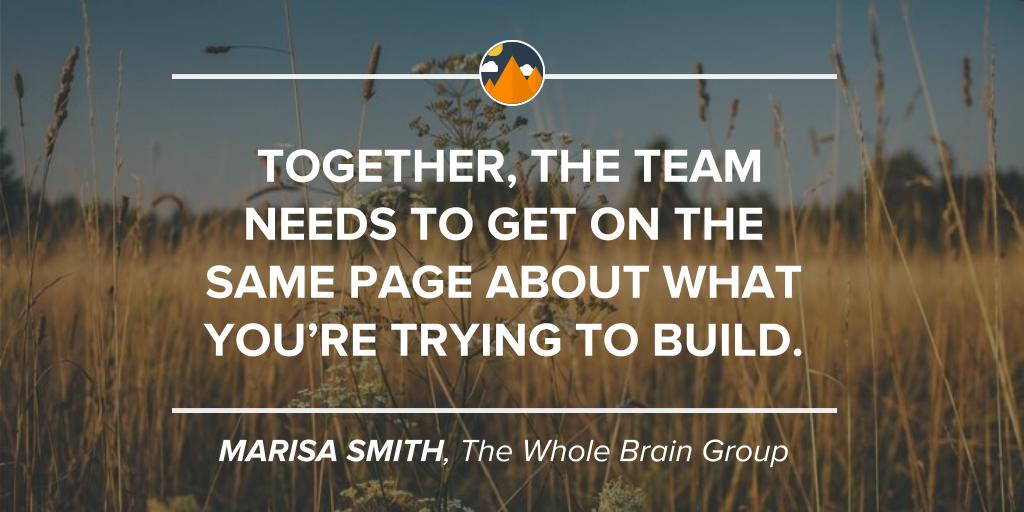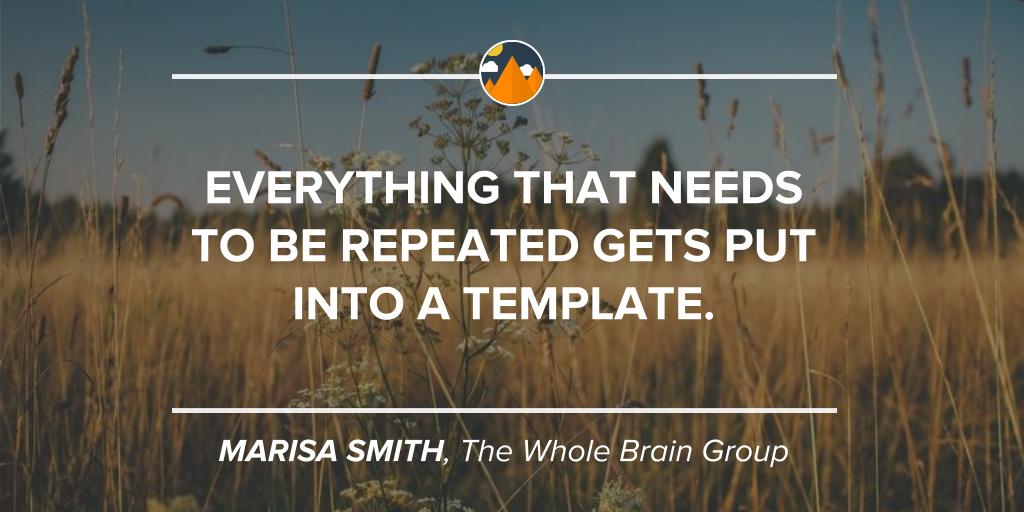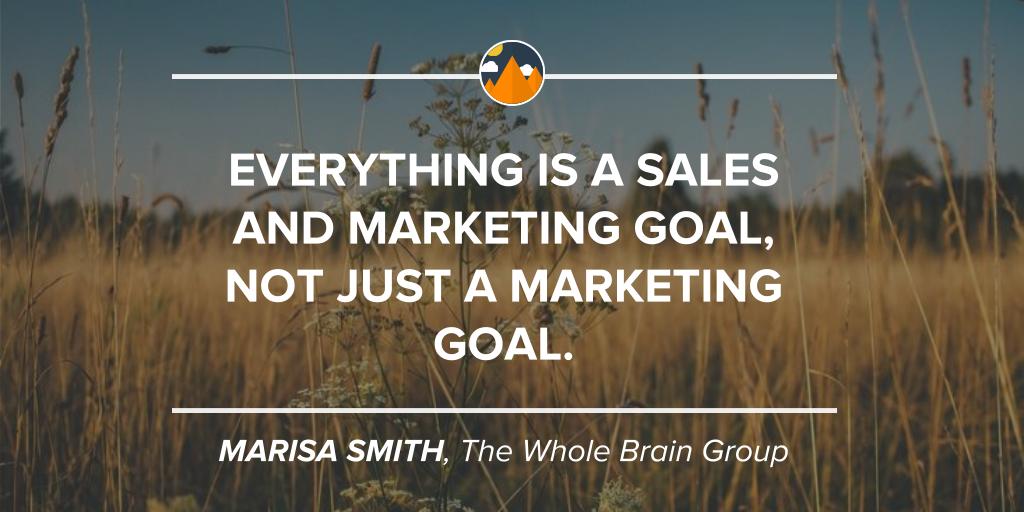Developing an Inbound Agency Operating System with Marisa Smith

Entrepreneurs Shift to Survive
When the economy took a noise dive in 2008, a lot of businesses didn’t survive. Marisa felt that if they didn’t shift their focus, they’d have to close their doors.
During this period, they took stock and decided to shift to a WordPress web design agency. This shift proved to be the right one.
After success with early clients, they expanded into social media marketing. Like other agencies in this space, they soon realized something wasn’t working. Projects were great, but there was no way to forecast their revenue. It was time for another shift.
This time, they shifted toward inbound. They wanted to offer a well rounded suite of services to their clients. They also wanted to have a better idea of their agency income.
This shift brought with it the move to the retainer model. Today Marisa is proud to share that 80% of the company’s business comes from retainer accounts.
Setting to a Clear Vision
Each shift brings with it a new set of challenges. When you’re growing a business, you need to be able to unite those around you. Everyone on the team needs to be moving in the same direction, each completing their role.

In 2012, Marisa and the team started using the Entrepreneurial Operating System. The book Traction lays out this approach in detail. It is growing in popularity among inbound agencies.
The goal of the EOS is to bring clarity. Here are a few elements included in the EOS:
- Clear two page business plan
- Set up an accountability chart
- Define your core values
- Set quarterly rocks as a team
- Get on the same page about what you’re trying to build
“The team needs to get on the same page about what you’re trying to build.”
“We needed a culture shift. We needed to stop just discussing things and starting adding accountability.”
Growing with a team requires focus. It is so easy to lose track by getting distracted with little fires. To overcome this challenge, decide as a group what is most important. You want to focus on things that will keep the company moving forward.
Marisa found herself trying to tackle 12 different things at the same time. Not only was she overworked, but she was only half-finishing three or four of those items. The rest got stuck in a state of quasi completion.
“When we put the right structure in place, it freed me up.”
Breaking this cycle wasn’t easy. Admitting to herself that there were people who were better at certain tasks was a big first step. However, delegating tasks alone isn’t enough to build a business. You need to know that you can delegate to someone who is moving toward the same target.
Setting The Systems So You Can Let Go
When Marisa started delegating, it became infectious. The more she did it, the more responsibility she wanted to give away to her team. This made accountability an important theme in the agency.

If she was going to continue to trust her teammates, she needed to know they were following through. To overcome that challenge, the started following a structured meeting format.
The Level 10 meeting agenda keeps her team focused and on task. Adopting this structure has reduced those one-off discussions that suck time. These types of discussions often appear when one person has an issue and they want to talk about it.
This collaboration is great, but not if it derails the other members of the team. The Level 10 meeting agenda provides a great place for these discussions.
Each week, Marisa assembles the core team members for a leadership meeting. Present at the meeting:
- CEO
- COO
- Director of Sales & Marketing
- Director of Client Servicing
This meeting breaks down into several timed sections.
Analyze Score Cards
The agency runs on a scorecard. This is a set 15 key numbers that communicate the health of the business. It includes things like:
- Traffic, leads, contacts added
- Current sales pipeline
- Production numbers
- Service ticket response time and ticket backlog.
Each of these metrics are leading indicators to help identify possible pain points. By catching these things early, the team is able to prevent future fires.
“We use company scorecards to help us identify issues before they’re a big deal.”
Review To-Dos From Last Week
A meeting without follow up is just a waste of time. To help keep the whole team accountable, they review last week’s list of to-dos. This is a verbal check with each team member on their status. If something is “not done” too many times, it gets added to the issues list for discussion.
Review “Rocks”
You’ll never get where you’re going until you pick a destination. Each quarter, Marisa and the team create a list of rocks. These are the things that they agree are top-priority initiatives for the agency.
These quarterly goals break down into smaller milestones. Following this structure, they make sure that daily actions add up to big accomplishments.
Issue Solving
Each new week brings with it a new list of issues to solve. Marisa says that it is important to tackle this with a solutions mindset. They identify the top three greatest issues, solve them, and move down the list. If they can’t solve it, they push it back to next week.
Using Process to Differentiate Your Agency
Adopting this structure to their operations has had a direct impact on client servicing. They use scorecards to measure client progress and rocks to connect tactics to big picture things. Building a two-page business plan gets the client and the agency on the same page. They follow a meeting agenda to make sure the client doesn’t derail the conversation.
So how have clients reacted to this structure? Instead of push back, they’re actually attracting new clients who are craving this process.
Clients like the structure. To help them get up to speed, Marisa even sends a copy of Traction in their new client welcome basket!
Involving Sales in Marketing
Gone are the days when inbound is just about marketing. Today, smart inbound agencies connect sales and marketing.
For Marisa and the team, this starts at the beginning. This means bring sales people into the marketing strategy process. This helps to create alignment early. With their perspective, the team is able to better understand the customer’s needs.

This isn’t an alignment that only happens at the beginning. It only gets stronger with time. The client servicing contact sits in with sales meetings once a month. This meeting gives them perspective into why deals aren’t closing. From these discussions come a steam of content, workflows, and blog ideas.
Keeping Culture Alive While You Grow
As you grow, it is a struggle to maintain a culture. You need to find the balance as you grow so you have people when you have work, but don’t have too many team members.
Today there is a larger talent pool filled with people with inbound experience. Where before you needed to find the right person and teach them inbound skills. Now, you need to find people with inbound talent that is a good cultural fit.
Tools Recommended by Marisa
- Traction by Gino Wickman
- EOS Toolbox
- Teamwork
- Less Meeting




